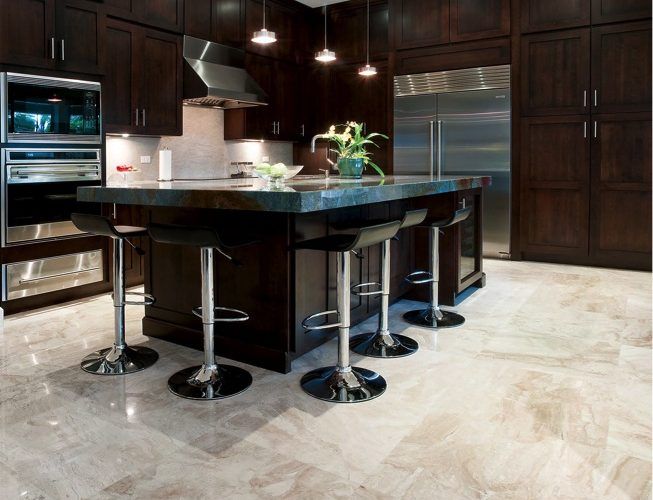
Four Tips for Selecting a Granite Counter top!
Four Tips for selecting a granite counter top start with knowing the difference between light and dark color granites. Dark colors are harder and will scratch and stain a lot less. Lighter colors are more desirable by interior designers and more appealing. However, they may absorb more water and retain it.
The legendary American architect, Louis Sullivan, held that “form ever follows function”. So this must be your mantra when selecting a granite top in your kitchen. This area has increasingly become the most popular space in the home and a place by which many homes are “judged,” if you will. So here we go with four tips for selecting a granite counter top in your kitchen.
- Is this a “to be cooked in” type of kitchen? If you intend to chop, pound, poor, boil, pare, broil and bake then you must think of the top in a certain way. Granite is really tough but not totally indestructible. So maybe a darker colored stone will ward off the inevitable spills and potential stains.
- What is the lighting plan for your kitchen? The amount of natural light that will be available in this space should bear directly on your granite selection. Even give some thought to the orientation of the area to the rising and setting sun. As a general rule, it stands to reason and logic that a better lit room will allow for the use of darker stone. Naturally, the reverse is also most likely true.
- What is your cabinet plan? The color of wood composing your cabinets is an obvious consideration when selecting your granite. Also of real significance is the color of your pulls and knobs. Make sure you understand the design linkage here.
- What “movement” in the granite works for you? Typically, granite is highly granular presenting a small pebble type of visual. Alternatively, there are many stone colors that feature more of flowing almost veined appearance. Check them both out.
Other design considerations for granite counter tops:
The kitchen islands generate a challenge in modern kitchens. These kitchens are large and may have an island that is larger than naturally available slab size.
Slab size is also important in making countertops with fewer seams. Larger kitchens tend to have cabinets that are longer than 10 ft and most granite slabs don’t come that long. For this reason, a seam has to be planned and installed in a section that does not make it obvious.
Edge profiles are also important in giving the right feel for your countertops. Contemporary kitchens like most city apartments have white cabinets and off white, gray, or black countertops. Some of the most popular quartzites such as Taj Mahal fit the bill. They go with lighter or darker colors. For a modern kitchen, it is recommended to have just an eased edge or polished straight edge.
You can see some of the most popular edge types here.

How do you choose the best quality granite?
Best quality granite needs to have the following characteristics:
- Recommended thickness is 3 cm or 1 1/4″. This thickness eliminates the need for a laminated edge or double glued edge. A solid edge is polished or bullnose so that an easy edge compliments your countertop.
- Best quality granite needs to be polished in a multi-head polishing like a Breton 24 head edge polisher. This machine enables a perfectly even surface with a high sheen.
Please contact us here for any other questions and thanks very much for reading!